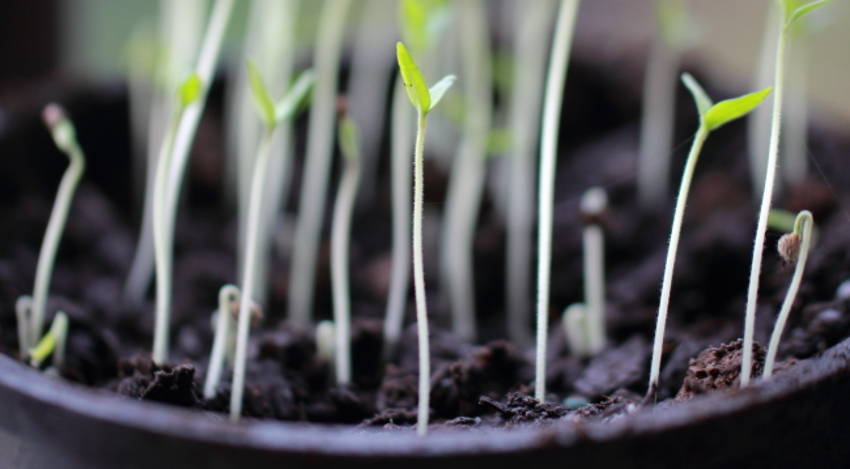Fresh, homegrown tomatoes are a world apart from their mass-produced relatives in the grocery stores. Sweeter, juicier, and tastier, they're one of the crops that makes edible gardening worth all the effort.
But growing tomatoes doesn't come without problems. One of the biggest issues home tomato growers face is indoor-sown seeds growing tall and spindly before the weather is good enough to transfer them outside.
Seedlings in this condition are described as "leggy," and it can spell the failure of an entire seedling batch if it's not handled carefully.
Why Do Seedlings Grow Leggy?
The main cause of leggy seedlings is a lack of light. As the seedlings grow, they push upward in search of direct sunlight, and in dim conditions, this is a never-ending effort. The stems will keep growing longer and longer at the expense of bushy leaf growth.
This effect is made worse when the temperature at night is too high, such as when seedlings are grown indoors. A combination of warmth and darkness makes the seedling "think" it's still trying to fight through the soil's surface, and it puts even more effort into vertical growth.
A second, but still important, cause of legginess is overcrowded seedlings. As overly close neighbors grow, they try to out-compete each other for sunlight by growing higher and higher, in a race that none can win.
Why Is Legginess a Problem?
Leggy seedlings have weak and underdeveloped stems, as their energy has been put into height rather than strength. In the worst cases, the plants can collapse under their own weight, which usually spells the end for a seedling.
But even if it avoids this fate, a leggy seedling will always be playing catch-up in the toughness stakes. For a fruit-bearing plant like tomatoes, this isn't a recipe for a long and productive life, as it won't have the vigor to develop and support a worthwhile harvest.
Fixing Leggy Seedlings
However, if your early sowing enthusiasm got the better of you, and your seedlings are getting dangerously leggy, all's not lost. A little emergency transplanting can give them a fresh lease of life. Here's what to do.
- Gently remove the seedlings from their seed tray, taking care not to damage the stems.
- Loosen the earth around the roots if it's tightly packed together.
- Fill a small pot with fine potting mix, making sure there's good drainage.
- Using your finger, make a hole in the center of the soil, pressing down at least half way to the bottom.
- Lay a seedling flat across the hole, placing it so the leafy, top two-thirds of the stem is on one side, and the bottom third with the roots on the other.
- Use a gentle finger or an eraser-topped pencil to ease the stem down into the hole. This should fold the stem in two, dragging the root end downward, and leaving the top third upright and above the surface.
- Gently firm down the earth, filling the hole, and water to set it in place.
- Move the pot to a sunny, warm location, and continue watering as necessary while the plant adapts.
- The buried stem will effectively become part of the root system, giving the plant an anchor, and leaving the leafy part to develop strength as it grows.
- Allow the seedling to establish, and once the weather is suitable, plant out in its final location.
The first time your tomato seedlings race away and become leggy, it's easy to panic and plant them outdoors before conditions are suitable. This simple trick will buy you a few precious weeks, and knowing that you've averted disaster will make your tomatoes taste all the sweeter.






